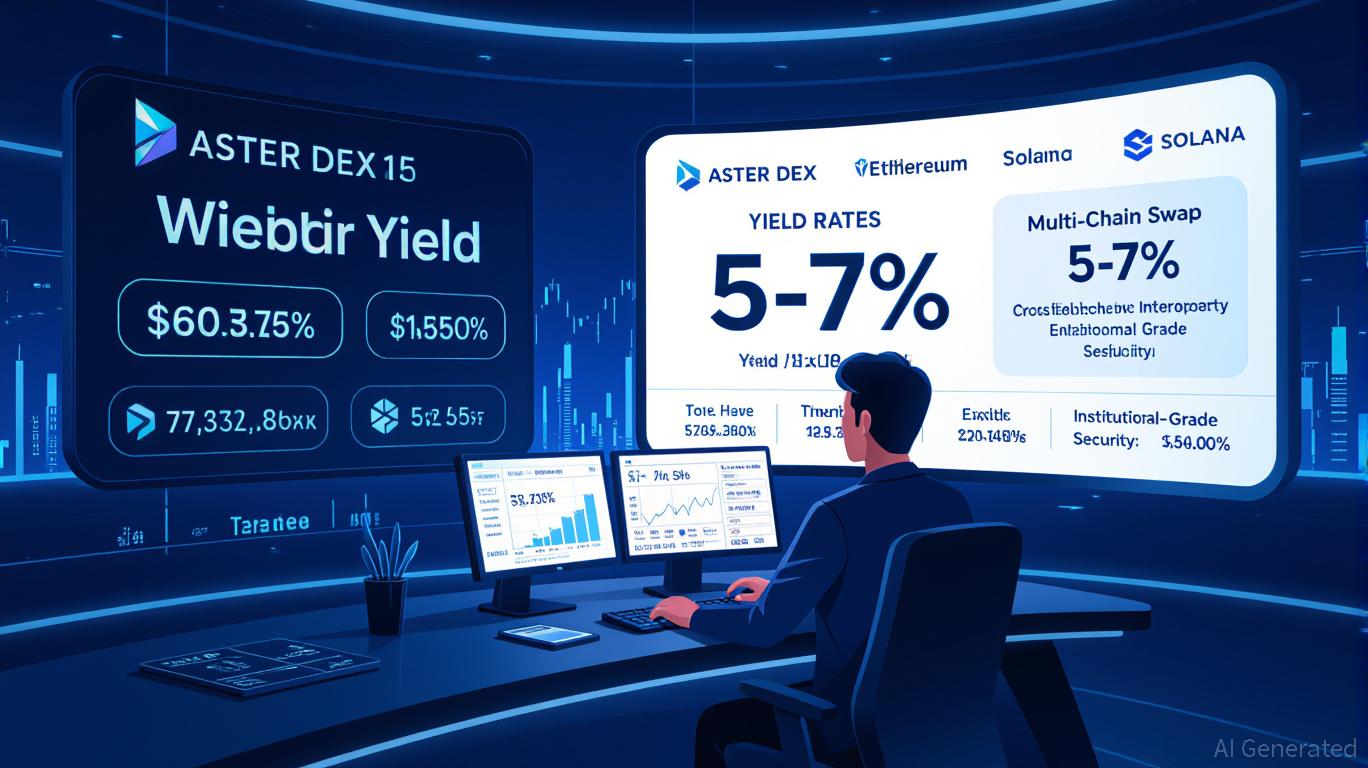COAI's Latest Price Decline: An Overreaction by the Market and a Chance for Undervalued Investment
- COAI Index plunged 88% YTD in Nov 2025 amid AI/crypto AI sector selloff, driven by C3.ai's leadership turmoil, $116.8M losses, and regulatory ambiguity. - C3.ai's Q1 2025 revenue rose 21% to $87.2M, with 84% recurring subscription income, highlighting resilient business fundamentals despite unprofitability. - AI infrastructure stocks like Celestica (CLS) surged 5.78% as analysts raised price targets to $440, contrasting crypto AI's freefall and signaling market overcorrection. - Regulatory clarity on AI/
The Catalysts: Leadership Changes, Legal Challenges, and Regulatory Uncertainty
The sharp drop in the COAI Index was set off by a combination of negative events. C3.ai, a key player in the AI field, has attracted considerable criticism.
Wider market forces have made the situation worse.
The Fundamentals: Resilient Sector and Revenue Expansion
It’s important not to let the panic overshadow the facts. Despite its losses, C3.ai
It’s also worth noting that the COAI Index is not just a reflection of C3.ai’s performance. It encompasses a wider range of AI and crypto AI initiatives, many still in their early stages. The sector’s current obstacles are significant but likely temporary. Once regulatory guidelines are clarified, substantial growth could follow. For now, the market is reacting as if the worst-case scenario is certain, ignoring the possibilities for progress and adaptation.

Analyst Price Targets: Optimism for AI Infrastructure
This is where things get interesting. While COAI is struggling, another player in the AI infrastructure arena—Celestica Inc. (CLS)—is being recognized for its success.
This trend is not isolated.
The Bottom Line: Seize the Dip, Manage the Risk
The sharp decline in COAI’s value is a textbook example of an overblown market response. The sector’s issues are genuine, but not insurmountable. C3.ai’s numbers show underlying strength, and although regulatory clarity is taking time, it is expected. Meanwhile, the AI infrastructure sector is being rewarded for its reliability and growth prospects.
For those comfortable with risk, COAI now presents an attractive entry point. However, caution is advised.
Disclaimer: The content of this article solely reflects the author's opinion and does not represent the platform in any capacity. This article is not intended to serve as a reference for making investment decisions.
You may also like
Vitalik Buterin Backs ZKsync: Igniting Ethereum Layer 2 Innovation and Ushering in the Next Era of DeFi
- Vitalik Buterin's endorsement of ZKsync's Atlas upgrade accelerates Ethereum's ZK-based scalability strategy, positioning ZKsync as a key DeFi infrastructure player. - The upgrade achieves 15,000+ TPS with near-zero fees via ZK Stack, enabling 30% stablecoin dominance and bridging Ethereum's L1-L2 liquidity gaps. - Institutional adoption surges as ZK token gains 50% post-endorsement, supported by $15B in ZK-related DeFi inflows and StarkNet's TVL tripling in Q4 2025. - Upcoming Fusaka upgrades (30,000 TP

ZK Atlas Enhancement and Its Influence on Layer 2 Scaling
- The ZK Atlas Upgrade (Oct 2025) revolutionized Layer 2 scalability with 15,000+ TPS and $0.0001/tx costs via innovations like Atlas Sequencer and Airbender prover. - Vitalik Buterin's GKR protocol reduced ZK verification costs 10-15x, slashing Ethereum gas fees by 90% and boosting DeFi competitiveness. - ZK ecosystem TVL hit $3.5B by 2025, with $15B in Bitcoin ETF investments and 60.7% CAGR projected for ZK Layer 2 market growth to $90B by 2031. - Institutional adoption accelerated as stablecoins capture

Bitcoin Updates Today: Veteran Bitcoin Holders Selling Raises Questions: Is the Market Unstable or Undergoing a Tactical Change?
- Bitcoin OG holders are accelerating sales of decade-old BTC stashes, with $1B+ moved from pre-2018 wallets in 2025. - Analysts debate motives: Erik Voorhees sees long-term adoption focus, while Willy Woo cites quantum risk mitigation and SegWit address shifts. - Price volatility intensifies as BTC struggles to reclaim $105k-$106k support, with $722M realized losses and ETF buying ($530M) failing to offset selling pressure. - Historical patterns suggest potential 15-20% corrections, with on-chain expert D

DeFi’s Latest Gateway: How DASH’s Calculated Strategy Demonstrates Trustworthiness to Institutions
- Aster DEX's DASH token, with institutional backing, drives DeFi adoption through hybrid models. - DASH's yield-collateral model offers 5-7% returns, bridging traditional and decentralized finance. - Partnerships with Binance and $17.35B TVL validate Aster DEX's institutional credibility. - Price volatility and regulatory risks persist, but hybrid compliance tools mitigate challenges. - DASH's strategic move highlights DeFi's potential as a bridge to next-gen financial infrastructure.
